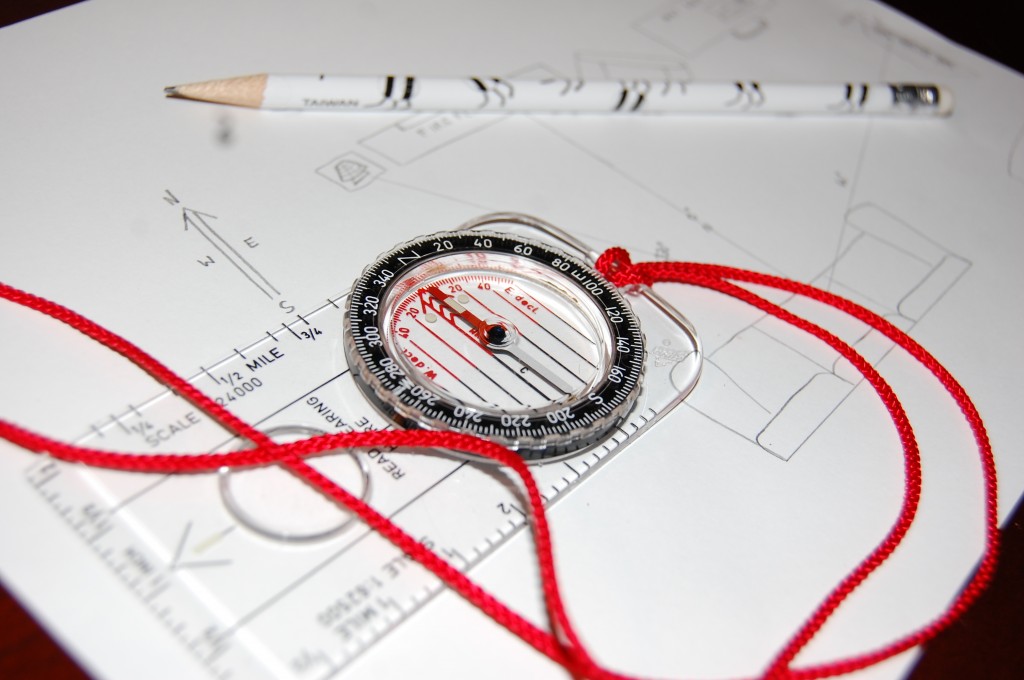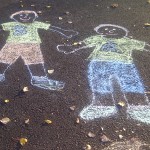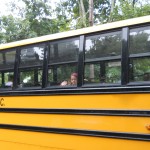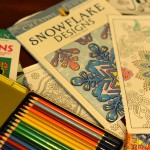Like many cars these days, my car has a digital display with the outside temperature and car direction above rear view mirror. This summer my children became obsessed with it, constantly screaming the temperature and direction updates. With sibling rivalry on the line, my 4 and 6 year old picked up how to read double digit numbers and the direction abbreviations pretty quick. To try to distract the continuous competitive yelling, we made up some new games.
One was guessing the direction we would be facing when we turned or when a curve was coming up ahead, or predicting what direction we would be facing when we got to a destination a few turns away. We talked about directions enough that no one was making a complete guess anymore, but trying to figure it out with some sort of compass rose pattern in their mind.
This brought us to what a compass was and how to use one. My old compass from high school Ecology class has become a toy in the house. Mostly, the kids like to walk around holding the compass saying that they are compassing themselves from room to room, but there are some simple games you can play when you are stuck inside, even with this age group.

- Make treasure hunts. Write out simple directions. If you use paces, you’ll need to make sure your unit of pace measurement matches up with the kid walking the hunt. If your kid might have fun with a compass, your kid might also like to carry a tape measure, so you could have kids work in a team and carry a tape measure. My kids take slow baby steps while concentrating on holding the compass level… so you can start with something simple: “Start at the front door, walk 10 baby steps North, take 15 baby steps East, 28 baby steps South, turn and look towards the West and find your prize.” Or you can do something like “Standing at the front door, walk to the landmark that is NNW. Now walk to the landmark at SW.” As with any of these games, depending on the age group, you can make them more complex by using more complex angles – instead of just using 90 degree turns you can describe angles with NNW (north northwest) or by using numeric degrees – “move forward at 40 degrees” or “turn 235 degrees to the West.” Then have them try to create their own treasure hunt instructions.
- Map your house. Make your own maps from scratch or if you have it, use a copy of your floor plan. Plan out a route using the compass and maps at a desk or table, and then walk it out and see if it works. Stick with just directions, or add in scaling and measurements. What’s the most North object in the house? What’s the most South?
- Drawing. Make a challenge to figure out the compass directions and angles to write the letters in their name or a shape. Have them unroll some string or yarn as they walk can help see the symbol come together.
- Triangulation practice. This is more advanced but a good challenge to figure out or to solve. The concept is that you use geometry to calculate an unknown point from known landmarks. For example, if you are in a living room, you might hide something under the couch and say “the object is hidden with the fireplace at 180 degrees, the spider plant at 300 degrees and the arm chair at 200 degrees.”







